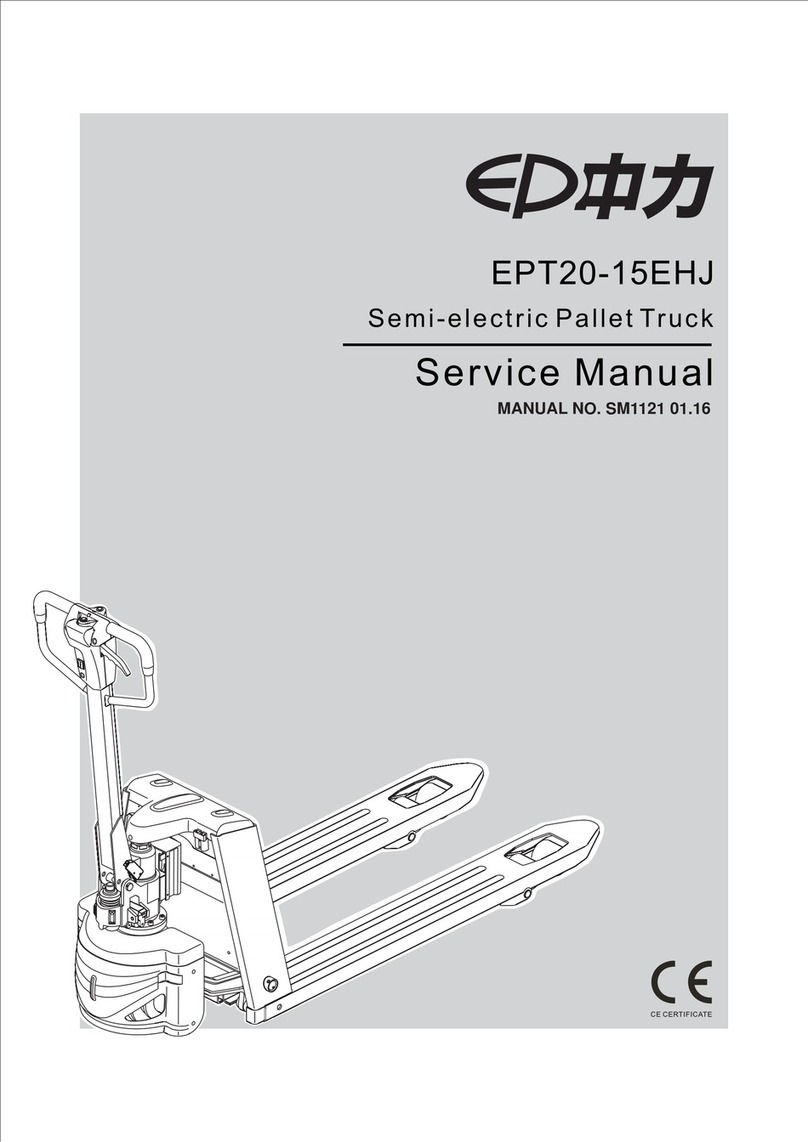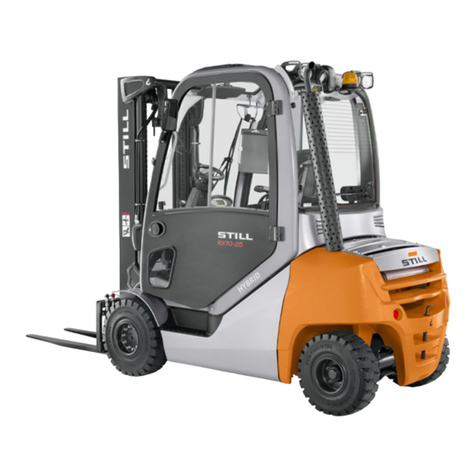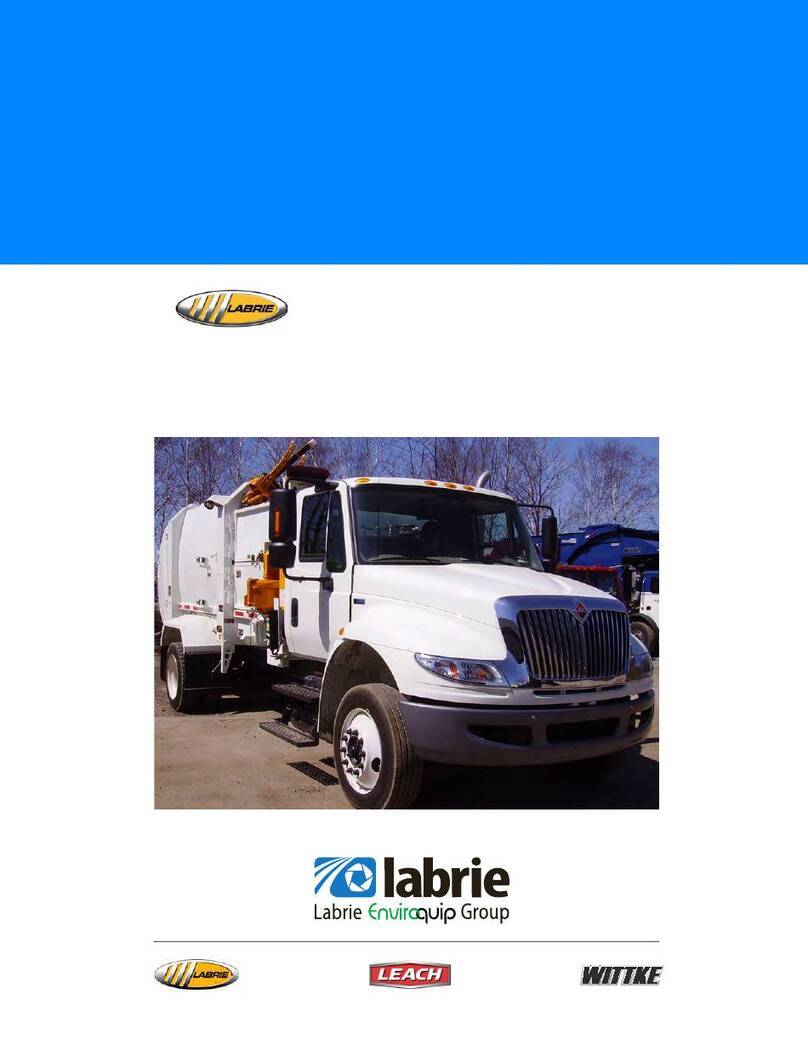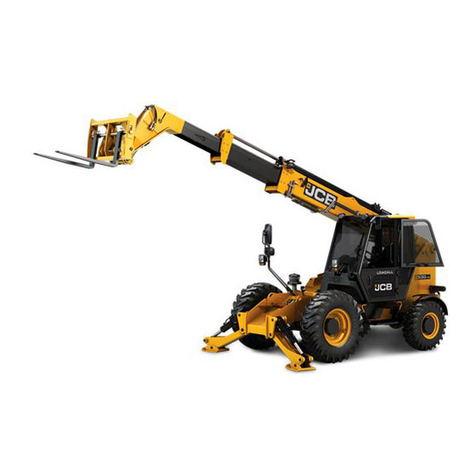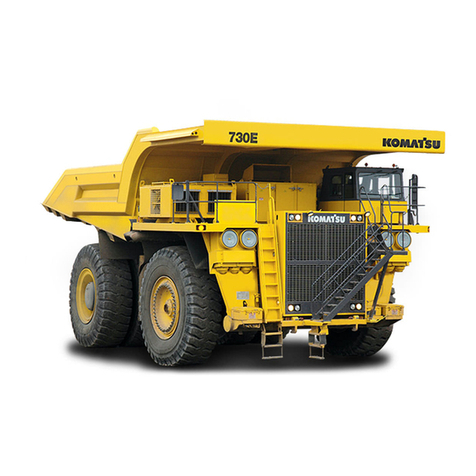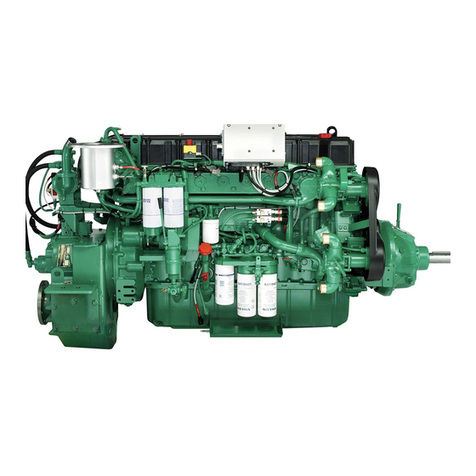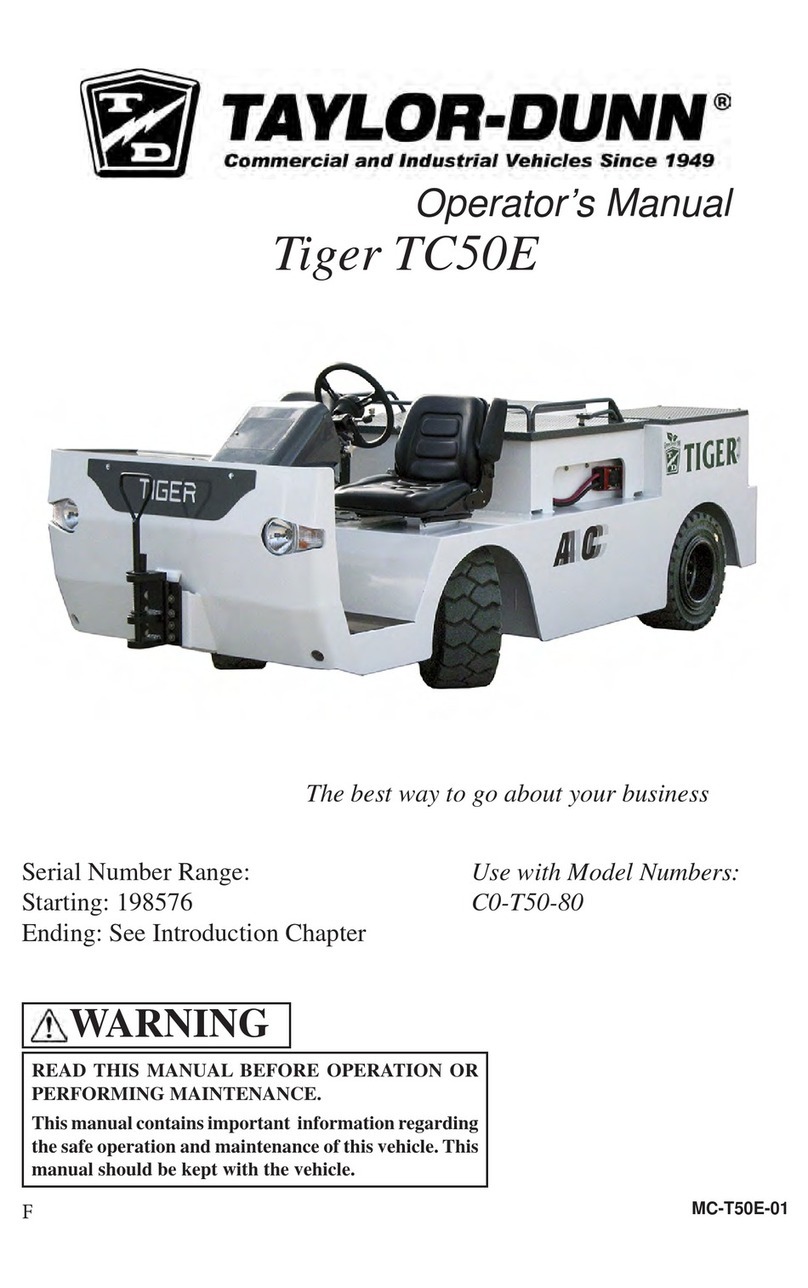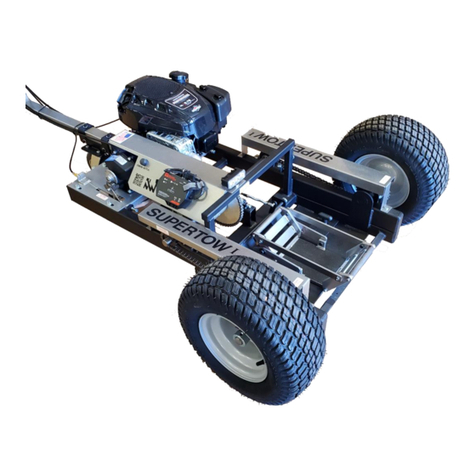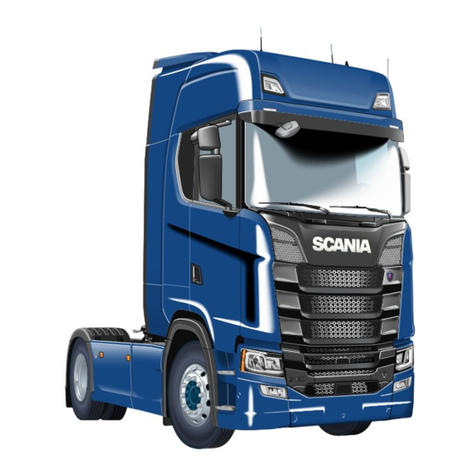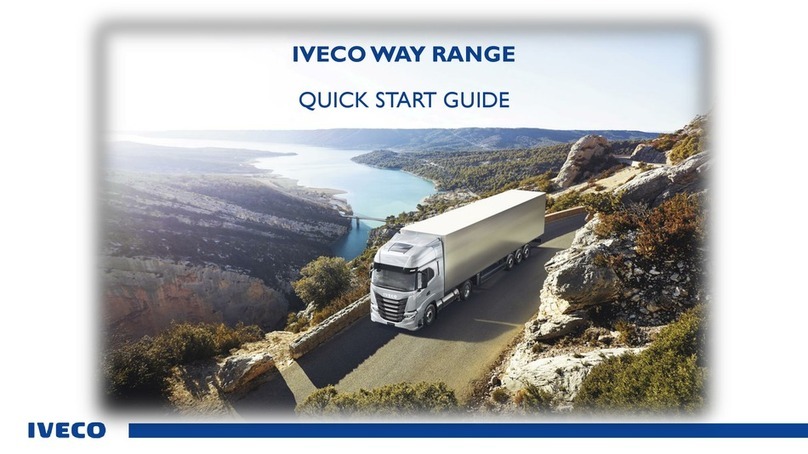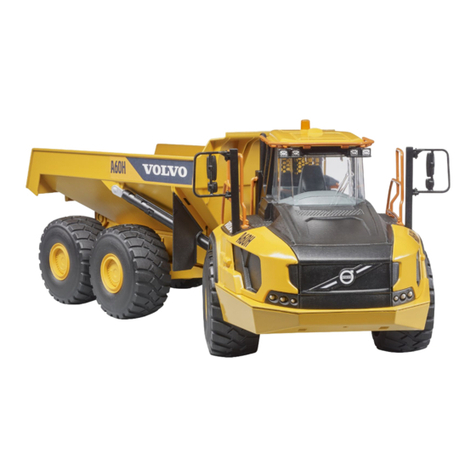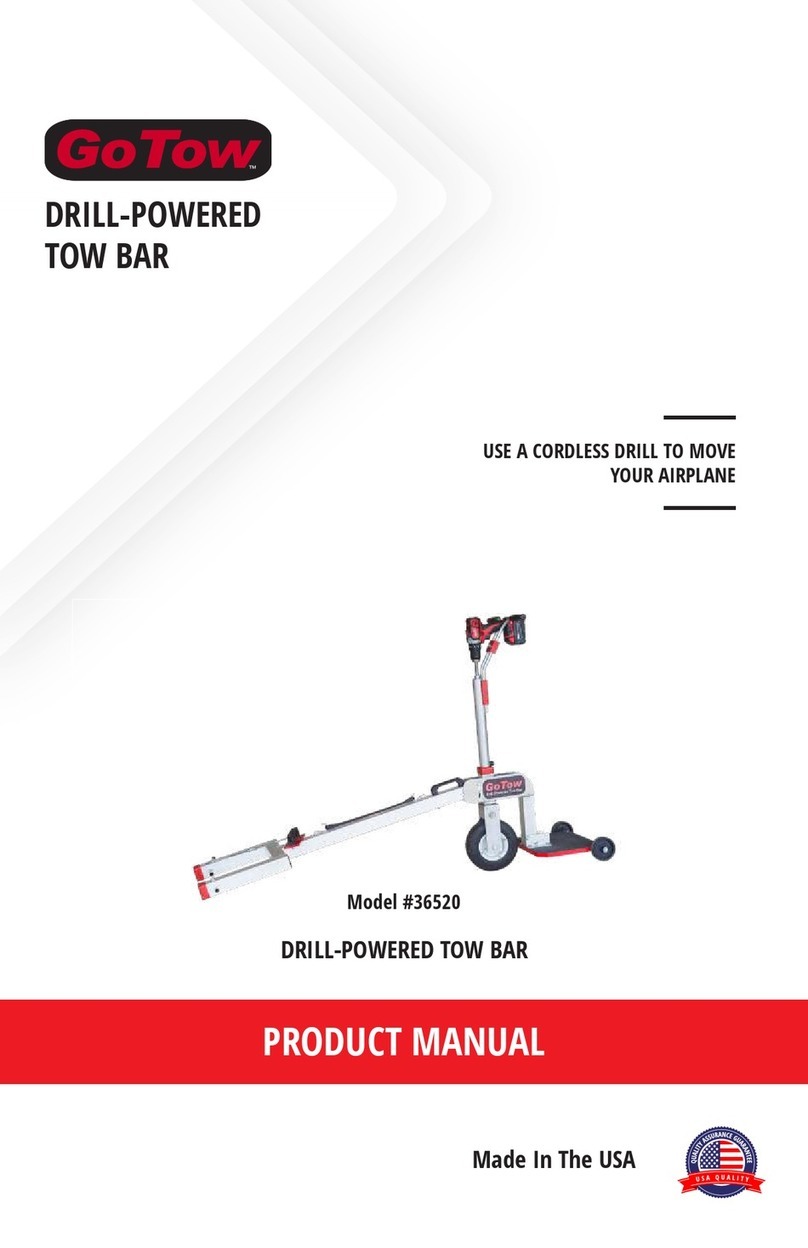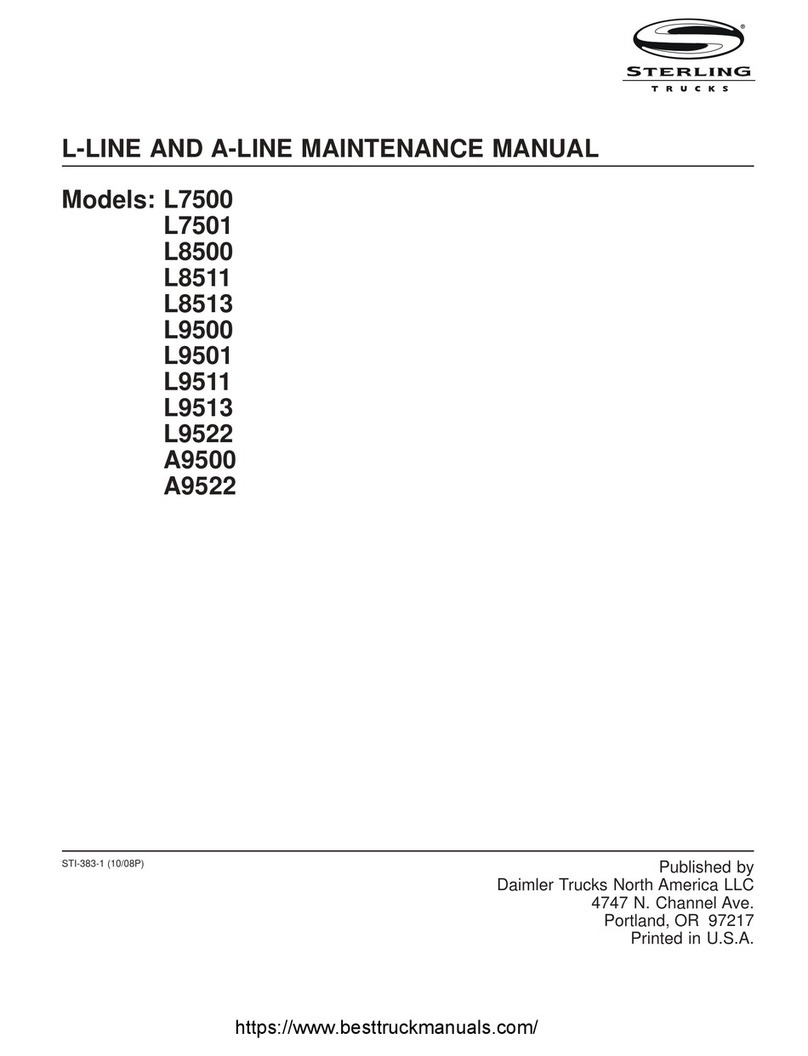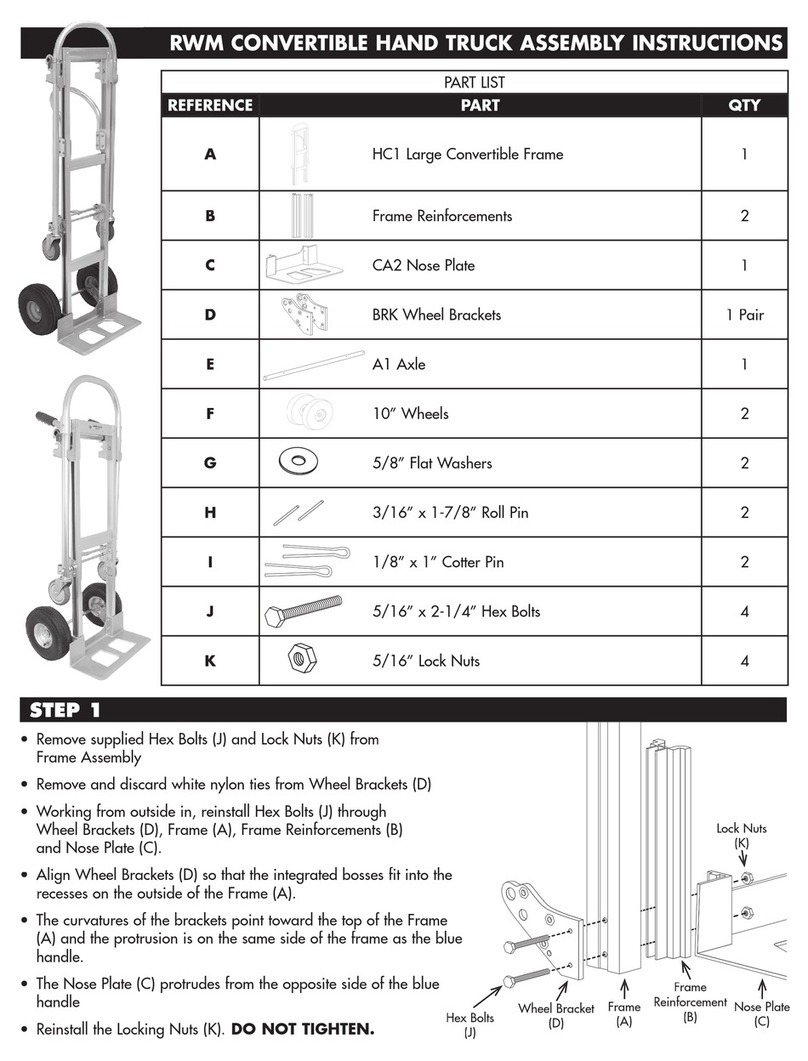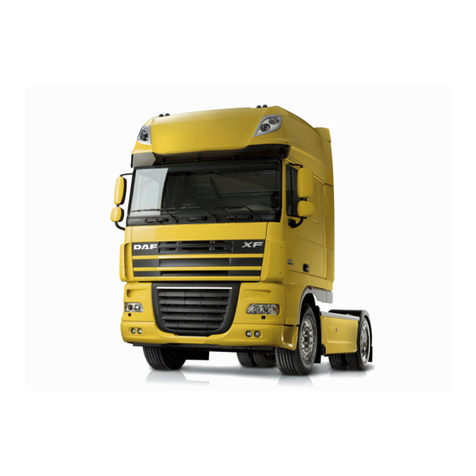Peterbilt 220 User manual



220


Safety ..................................... 1
Emergency ..................................... 2
Controls ..................................... 3
Driving ..................................... 4
Maintenance ..................................... 5
Information ..................................... 6
Contents

© 2019 PACCAR Inc. - All Rights Reserved
This manual illustrates and describes the operation of features or equipment which may be either
standard or optional on this vehicle. This manual may also include a description of features and
equipment which are no longer available or were not ordered on this vehicle. Please disregard any
illustrations or descriptions relating to features or equipment which are not on this vehicle. PACCAR
reserves the right to discontinue, change specifications, or change the design of its vehicles at any
time without notice and without incurring any obligation. The information contained in this manual is
proprietary to PACCAR. Reproduction, in whole or in part, by any means is strictly prohibited without
prior written authorization from PACCAR Inc.
Contents

Chapter 1 | SAFETY
WHY THIS HANDBOOK IS SO IMPORTANT! .................................................................................... 6
Safety Alerts ........................................................................................................................................ 6
Warnings and Safety Regulations ....................................................................................................... 7
Emergency Equipment ........................................................................................................................ 9
Technical Items of Special Importance .............................................................................................. 12
Jump Starting Vehicles ...................................................................................................................... 14
SAFETY
Y53-6078-1B1 (12/18/18) 5
1

Chapter 1 | Safety
WHY THIS HANDBOOK IS
SO IMPORTANT!
This handbook contains the information
which you, the driver, will need for optimum
efficiency, safety and comfort when
operating this vehicle. Besides giving
instructions about operation and use, it
also pays attention to maintenance and
minor repairs which you may be able to
carry out yourself.
NOTE
This handbook is based on the chassis
with its fittings as it originally left the
factory.
Depending upon the required body and
equipment, the bodybuilder may have
made fundamental changes to various
parts or systems, such as the instrument
panel, the lighting or the electric wiring.
Every new vehicle is designed to conform
to all Federal Motor Vehicle Safety
Standards applicable at the time of
manufacture. Even with these safety
features, continued safe and reliable
operation depends greatly upon regular
vehicle maintenance. Follow the
maintenance recommendations found in
Preventive Maintenance. This will help
preserve your investment
Important: Make sure this handbook is in
the vehicle at all times. Read it carefully
before making your first journey, especially
the "Warnings and safety precautions",
"Cab, instruments and controls",
"Inspections" and "Driving" sections.
Safety Alerts
Please read and follow all of the safety
alerts contained in this manual. They are
there for your protection and information.
These alerts can help you avoid injury to
yourself, your passengers and help prevent
costly damage to the vehicle. Safety alerts
are highlighted by safety alert symbols and
signal words such as “WARNING”,
“CAUTION”, or “NOTE”. Please DO NOT
ignore any of these alerts.
Warnings
The safety message following this symbol
and signal word provides a warning against
operating procedures which could cause
death or injury. They could also cause
equipment or property damage. The alert
will identify the hazard, how to avoid it and
the probable consequence of not avoiding
the hazard.
Example:
WARNING
Hot engine oil can be dangerous. You
could be burned. Let the engine oil
cool down before changing it. Failure
to comply may result in death, person-
al injury, equipment or property dam-
age.
Cautions
SAFETY - WHY THIS HANDBOOK IS SO IMPORTANT!
6 Y53-6078-1B1 (12/18/18)
1

The safety message following this symbol
and signal word provides a caution against
operating procedures which could cause
equipment or property damage. The alert
will identify the hazard, how to avoid it, and
the probable consequence of not avoiding
the hazard.
Example:
CAUTION
Continuing to operate your vehicle with
insufficient oil pressure will cause seri-
ous engine damage. Failure to comply
may result in equipment or property
damage.
Notes
The message following this symbol and
signal word provides important information
that is not safety related but should be
followed. The alert will highlight things that
may not be obvious and is useful to your
efficient operation of the vehicle.
Example:
NOTE
Pumping the accelerator will not assist
in starting the engine.
Warnings and Safety
Regulations
WARNING
To prevent damage to the vehicle and
in order not to jeopardize your health
and/or safety, or that of other people,
the following warning and safety regu-
lations must be strictly observed.
First read the instructions and warnings on
the labels and stickers on the various
components and comply with them!
They have been put there for your health
and safety, so do not ignore them!
Modifications to the Vehicle
Modifying your vehicle can make it unsafe.
Some modifications can affect your
vehicle's electrical system, stability, or
other important functions. Before modifying
your vehicle, check with your dealer to
make sure it can be done safely. Improper
modifications can cause death or personal
injury.
SAFETY - Warnings and Safety Regulations
Y53-6078-1B1 (12/18/18) 7
1

Environmental Protection
WARNING
CALIFORNIA PROPOSITION 65
WARNING
• Diesel engine exhaust and
some of its constituents are
known to the State of California
to cause cancer, birth defects,
and other reproductive harm.
• Other chemicals in this vehicle
are also known to the State of
California to cause cancer, birth
defects or other reproductive
harm.
• Battery posts, terminals, and re-
lated accessories contain lead
and lead compounds, chemicals
known to the State of California
to cause cancer and reproduc-
tive harm. Wash hands after
handling.
A Special Word About Repairs
WARNING
DO NOT attempt repair work without
sufficient training, service manuals,
and the proper tools. You could be kil-
led or injured, or you could make your
vehicle unsafe. Perform only those
tasks you are fully qualified to do.
WARNING
Modifying your vehicle can make it un-
safe. Some modifications can affect
your vehicle's electrical system, stabili-
ty, or other important functions. Before
modifying your vehicle, check with
your dealer to make sure it can be
done safely. Improper modifications
can cause death or personal injury.
CAUTION
The installation of electronic devices to
the On Board Diagnostics (OBD) con-
nector, the vehicle Controller Area Net-
work (CAN), or their associated wiring
is not permitted. Doing so can ad-
versely affect vehicle performance
and/or cause fault codes to be record-
ed. The OBD connector is provided for
temporary connection of service tools
and for diagnostic purposes only.
Your dealer’s service center is the best
place to have your vehicle repaired. You
can find dealers all over the country with
the equipment and trained personnel to get
you back on the road quickly—and keep
you there.
Your vehicle is a complex machine.
Anyone attempting repairs on it needs
good mechanical training and the proper
tools. If you are sure you have these
requirements, then you can probably
perform some repairs yourself. However,
all warranty repairs must be performed by
an authorized service facility. If you aren’t
an experienced mechanic, or don’t have
the right equipment, please leave all
repairs to an authorized service facility.
They are the ones equipped to do the job
safely and correctly.
SAFETY - Warnings and Safety Regulations
8 Y53-6078-1B1 (12/18/18)
1

Maintenance Manuals
If you do decide to do any complex repair
work, you’ll need the maintenance
manuals. Order them from your authorized
dealer. Please provide your Chassis Serial
Number when you order, to be sure you
get the correct manuals for your vehicle.
Allow about four weeks for delivery. There
will be a charge for these manuals.
Final Chassis Bill of Material
A complete, non-illustrated computer
printout listing of the parts used to custom-
build your vehicle is available through the
dealer from whom you purchased your
vehicle.
Components
Do not work on or near the fan with the
engine running. Anyone near the engine
fan when it turns on could be seriously
injured. If it is set at MANUAL, the fan will
turn on any time the ignition key switch is
turned to the ON position. In AUTO, it
could engage suddenly without warning.
Before turning on the ignition or switching
from AUTO to MANUAL, be sure no one is
near the fan.
Cooling System Filler Cap
WARNING
Do not remove the radiator fill cap
while the engine is hot. Scalding
steam and fluid under pressure may
escape. You could be badly burned.
Failure to comply may result in death
or personal injury.
Emergency Equipment
It is good practice to carry an emergency
equipment kit in your vehicle. One day, if
you have a roadside emergency, you will
be glad the following items are with you:
• Window scraper
• Snow brush
• Container or bag of sand or salt
• Emergency light
• Warning triangles
• Small shovel
• First aid kit
• Fire extinguisher
• Vehicle recovery hitches. (See
Towing on page 25 for details).
Fire Extinguisher
Ensure that you are always in possession
of a fire extinguisher It should be well
secured under the seat, within the driver's
reach and easily accessible, also for
rescue workers and others providing
assistance. Have the fire extinguisher
checked for operational readiness each
year. If it has been used, have it refilled at
the earliest opportunity.
In the Event of Fire
In the event of a fire, certain plastic seals
can produce gases which together with
water form a corrosive acid. Do not touch
any fire extinguisher fluid on the vehicle
without protective gloves.
SAFETY - Emergency Equipment
Y53-6078-1B1 (12/18/18) 9
1

Cab
WARNING
Do not carry loose objects in your cab,
it can be dangerous. In a sudden stop,
or even going over a bump in the road,
they could fly through the air and strike
you or a passenger. You could be in-
jured or even killed. Secure all loose
objects in the cab before moving the
vehicle. Carry any heavy objects such
as luggage in the exterior storage
compartment and close it securely.
First Aid Kit
Ensure that you are always in possession
of a first aid kit and replace first aid items
as soon as possible after use to have the
kit always ready.
Tire Chains
If you need tire chains, install them on both
sides of each driving axle.
CAUTION
Chains on the tires of only one tandem
axle can damage the driveline U-joints
and the inter-axle differential. Your re-
pairs could be costly and time-con-
suming.
Approaching your Vehicle
• Check the overall appearance and
condition. Are windows, mirrors,
and lights clean and unobstructed?
• Check beneath the vehicle. Are
there signs of fuel, oil, or water
leaks?
• Check for damaged, loose, or
missing parts. Are there parts
showing signs of excessive wear
or lack of lubrication? Have a
qualified mechanic examine any
questionable items and repair them
without delay.
• Check your load. Is it secured
properly?
Oils and Lubricants
Various kinds of oil and other lubricants
used on the vehicle may constitute a health
hazard if they come into contact with the
skin. This also applies to engine coolant,
windshield washer fluid, refrigerant in air
conditioning systems, battery acid and
diesel fuel. So avoid direct contact as
much as possible.
The engine and the surrounding area must
be free of inflammable materials to avoid
the risk of fire.
Exercise caution when changing hot oil; it
can cause serious bodily injury.
WARNING
Air conditioning refrigerant can be haz-
ardous to your health. Do not expose
yourself to leaking refrigerant for pro-
longed periods near excessive heat,
open flames, or without proper ventila-
tion. Failure to do so may result in
death or personal injury.
SAFETY - Emergency Equipment
10 Y53-6078-1B1 (12/18/18)
1

Maintenance Activities
When carrying out maintenance work
under the cab, make sure the cab is fully
tilted and locked to prevent it from falling
back accidentally.
Following a collision, only tilt the cab in an
emergency situation. The tilting
mechanism may be damaged. (The end
stop may no longer be on the lifting
cylinder.)
WARNING
Always support the vehicle with appro-
priate safety stands if it is necessary to
work underneath the vehicle. A jack is
not adequate for this purpose.
Maintenance of Air Conditioning
System
WARNING
Excessive heat may cause the pres-
surized components of the air condi-
tioning system to explode. Never weld,
solder, steam clean, or use a blow
torch near any part of the air condition-
ing system. Failure to comply may re-
sult in personal injury, death, equip-
ment or property damage.
WARNING
Air conditioning refrigerant can be haz-
ardous to your health. Do not expose
yourself to leaking refrigerant for pro-
longed periods near excessive heat,
open flames, or without proper ventila-
tion. Failure to do so may result in
death or personal injury.
WARNING
The air conditioning system is under
pressure. If not handled properly dur-
ing servicing, it could explode. Any
servicing that requires depressurizing
and recharging the air conditioning
system must be conducted by a quali-
fied technician with the right facilities
to do the job. Failure to comply may
result in personal injury, death, equip-
ment or property damage.
Environment
Pollution constitutes a serious threat to the
environment. To keep pollution to a
minimum, the following rules should be
observed:
• Do not dump used oil, fuel,
lubricants, hydraulic fluid or
coolants in drains, sewers, in
landfills or on the ground. This is
illegal. These fluids should be
returned to the designated
authority or appropriate chemical
waste collection company for
recycling or destruction. All used
fluids should be stored separately.
• Make sure that the vehicle is
serviced regularly according to the
instructions and recommendations.
A properly serviced vehicle helps
optimize fuel economy and reduce
the level of harmful constituents in
the exhaust gases.
SAFETY - Emergency Equipment
Y53-6078-1B1 (12/18/18) 11
1

Technical Items of Special
Importance
To prevent damage to the vehicle, the
following instructions must be strictly
observed.
Running-in
During the running-in period it is best not to
subject the new vehicle to excessive loads.
This also applies when an overhauled
engine, transmission or differential has
been installed. Therefore, for the first 932
miles (1,500 km): drive carefully and avoid
accelerating sharply.
The following technical items of special
importance applies to both the running-
in period and to the period thereafter.
After a cold start continue to drive in a
low gear and at a moderate engine speed
until the engine coolant temperature is out
of the blue zone.
While driving, check the instrument panel
regularly and take appropriate action if you
notice anything unusual, such as strange
engine or transmission noises, smoke, or
poor performance. Do not let the engine
idle for longer than necessary. This is
harmful to the engine and also causes
unnecessary pollution of the environment.
Be aware that engine stalling while
driving will lead to power steering failure.
Consequently, the vehicle will be more
difficult to steer.
The engine cooling system is
thermostatically controlled.
Removing the thermostat when the
coolant temperature is (too) high serves no
useful purpose and is strongly advised
against, since this will only cause the
engine temperature to rise to an even
higher level.
The turbocharger is a precision
component. You should therefore
immediately report any abnormal noise that
seems to be coming from this component.
Air Leakage
If the pressure in the air reservoirs drops
rapidly with the engine switched off, this
indicates a leak. Since this affects the
safety of the brake system, the leak must
be traced and repaired as quickly as
possible.
System Voltage
The cab system of this vehicle are on 24-
Volt while other areas remain 12-Volt.
When replacing or fitting electrical or
electronic components, always verify that
they are suitable for this system voltage.
Batteries
WARNING
Never disconnect the battery leads
while the engine is running!
Always disconnect the battery negative
(ground) lead before carrying out repairs or
service on the electrical system.
SAFETY - Technical Items of Special Importance
12 Y53-6078-1B1 (12/18/18)
1

WARNING
Before attempting any work on the bat-
teries or electrical system, remove all
jewelry. If metal jewelry or other metal
comes in contact with electrical cir-
cuits, a short circuit may occur causing
you to be injured, as well as causing
electrical system failure and damage.
Charging
WARNING
Thaw out frozen batteries before
charging them. Inspect the battery
case for damage: cracks, swelling of
the case, and/or battery acid leakage.
If damage is found, replace the bat-
tery. Remove all the filler caps before
charging.
WARNING
Charger cables must be connected
positive to positive (+ to +) and nega-
tive to negative (- to -). If connected
improperly, batteries could explode.
Failure to comply may result in person-
al injury, death, equipment or property
damage.
WARNING
Always make sure the battery charger
is OFF before connecting or discon-
necting the cable clamps. To reduce
the danger of explosions and resulting
death or personal injury, do not con-
nect or disconnect charger cables
while the charger is operating.
Charging Reminders
• Use protective eyewear.
• Keep all batteries away from
children.
• Never reverse battery poles.
• Never attempt to place the vehicle
in motion, or run the engine with
batteries disconnected.
• Keep the battery clean and dry.
• Look for any signs of damage.
• Battery terminals should not be
coated with improper grease. Use
petroleum jelly or commercially
available, noncorrosive,
nonconducting terminal coatings.
• Never use a fast charger as a
booster to start the engine. This
can seriously damage sensitive
electronic components such as
relays, radio, and haptic equipped
components, as well as the battery
charger. Fast charging a battery is
dangerous and should only be
attempted by a competent
mechanic with the proper
equipment.
Battery Capacity
Using electrical components, such as the
cab heater or refrigerator when the engine
is not running, power will be drawn from
the batteries.
Approximately half the battery capacity is
required to start the engine.
If this is the case over a protracted period,
particularly during low temperatures, the
result may be that the electrical
SAFETY - Technical Items of Special Importance
Y53-6078-1B1 (12/18/18) 13
1

components have used so much power
that there is not enough to start the engine.
If the high current draw electrical
components, such as the cab heater,
refrigerator, coffee percolator, microwave
oven or tail-lift are used, it is recommended
that you obtain batteries of an adequate
higher capacity in consultation with your
dealer.
Welding
For welding on the vehicle and/or
superstructure, see the "Bodybuilders
Manual". Not following the welding
instructions can cause damage to the
electronic components.
Jump Starting Vehicles
How to Jump Start a Battery
Jump starting a vehicle is not a
recommended practice due to the various
battery installations and electrical options.
However, if the vehicle battery is
discharged (dead), the vehicle may start by
using energy from a good battery in
another vehicle. This is termed jump
starting.
WARNING
Batteries contain acid that can burn
and gases that can explode. Ignoring
safety procedures may result in death,
personal injury, equipment or property
damage.
WARNING
Never jump start a battery near fire,
flames, or electrical sparks. Batteries
generate explosive gases that could
explode. Keep sparks, flame, and
lighted cigarettes away from batteries.
Failure to comply may result in death,
personal injury, equipment or property
damage.
WARNING
Never remove or tamper with battery
caps. Ignoring this could allow battery
acid to contact eyes, skin, fabrics, or
painted surfaces. Failure to comply
may result in death, personal injury,
equipment or property damage Be
careful that metal tools (or any metal in
contact with the positive terminal) do
not contact the positive battery termi-
nal and any other metal on the vehicle
at the same time. Remove metal jew-
elry and avoid leaning over the battery.
WARNING
When jump starting using a battery
booster, it is best to jump start with an
equivalently powered vehicle. Verify
that the booster battery has the same
volt and cold cranking amperage spec-
ifications as the dead battery before
attempting to jump start. Failure to
comply may cause an explosion result-
ing in death, personal injury, equip-
ment or property damage.
SAFETY - Jump Starting Vehicles
14 Y53-6078-1B1 (12/18/18)
1

CAUTION
Applying a higher voltage booster bat-
tery will cause expensive damage to
sensitive electronic components, such
as relays, and the radio. Failure to
comply may result in equipment dam-
age.
CAUTION
Improper hook-up of jumper cables or
not following these procedures can
damage the alternator or cause seri-
ous damage to both vehicles.
WARNING
Heed all warnings and instructions of
the jumper cable manufacturer. Failure
to comply may result in death, person-
al injury, equipment or property dam-
age.
1. Remove any jewelry that may come in
contact with the battery terminals.
2. Select a jumper cable that is long
enough to attach to both vehicles in a
way that ensures neither vehicle
touches each other.
3. Position the two vehicles together, but
do not allow them to touch.
4. Turn OFF all lights, heater, radio, and
any other accessory on both vehicles.
5. Set the parking brake (please refer to
Parking for specific instructions on
how to set the parking brake for this
vehicle).
6. Shift the transmission into park
position or neutral for manual
transmissions.
7. If either vehicle is equipped with
battery disconnects ensure they are in
the OFF position prior to connecting
the two vehicles.
8. Attach one end of a jumper cable to
the positive (+) terminal of the
discharged (dead) battery. This will
have a large red + or P on the battery
case, post, or clamp.
9. Attach the other end of the same
cable to the positive (+) terminal of the
good (booster) battery.
10. Attach the remaining jumper cable
FIRST to the negative (-) terminal
(black or N) of the good battery.
11. Attach the other end of the negative
cable to a bare metal part not bolted to
the engine block.
NOTE
Always connect positive (+) to
positive (+) and negative (-) to
negative (-).
12. If either vehicle is equipped with
battery disconnects, ensure that they
are in the ON position.
13. Start the vehicle that has the good
battery first. Let it run for 5 minutes.
14. Start the vehicle that has the
discharged (dead) battery.
The engine should start. If the engine fails
to start, do not continue to crank the
starter. Instead, contact the nearest
authorized dealer.
SAFETY - Jump Starting Vehicles
Y53-6078-1B1 (12/18/18) 15
1

WARNING
When disconnecting jumper cables,
make sure they do not get caught in
any moving parts in the engine com-
partment. Failure to comply may result
in death, personal injury, equipment or
property damage.
Reverse the above procedure exactly
when removing the jumper cables. With
engine running, disconnect jumper cables
from both vehicles in the exact reverse
order, making sure to first remove the
negative cable from the vehicle with the
discharged battery.
Disconnect Switch
This vehicle has a disconnect switch.
Ensure that your vehicle ignition has been
turned off for at least 40 seconds before
switching the disconnect switch to the OFF
position.
CAUTION
Wait 2 minutes after key-off before dis-
connecting battery power. Disconnect-
ing battery power sooner can result in
damage to vehicle DEF.
SAFETY - Jump Starting Vehicles
16 Y53-6078-1B1 (12/18/18)
1

Chapter 2 | EMERGENCY
Tilting the Cab ................................................................................................................................... 18
Replacing the Poly-V Belt ................................................................................................................. 19
Replacing the Fuel Line Filter ........................................................................................................... 20
Draining the Water Separator ............................................................................................................ 21
Releasing the Parking Brake ............................................................................................................. 21
Jacking Up the Front Axle ................................................................................................................. 22
Jacking Up the Rear Axle .................................................................................................................. 22
Changing the Wheel .......................................................................................................................... 22
Tire Inflating Connection ................................................................................................................... 24
Towing ............................................................................................................................................... 25
Replacing Bulbs ................................................................................................................................ 26
Fuses ................................................................................................................................................ 28
EMERGENCY
Y53-6078-1B1 (12/18/18) 17
2

Chapter 2 | Emergency
Tilting the Cab
General
WARNING
Make sure that the filler caps of the
cooling system, the hydraulic clutch
and the windshield washer reservoir
are tightened. Do not loosen the filler
caps when the cab is tilted.
WARNING
Only tilt the cab when the engine has
stopped.
WARNING
Make sure there is sufficient clearance
around the cab.
WARNING
You can stop tilting the cab forward at
any time by turning the valve to posi-
tion ⇓.
WARNING
If the vehicle has been involved in a
collision, the cab must under no cir-
cumstances be tilted without due pre-
cautions. The internal mechanism of
the lifting cylinder may have been
damaged to such an extent that the
cylinder is no longer locked by the in-
ternal stop washer. In that case there
is a danger of the cab no longer being
held back and falling forward to the
ground. Have your authorized Service
dealer check the tilting mechanism.
WARNING
Make sure that there is no one in the
cab. Also make sure there are no
loose objects inside the cab; this in-
cludes objects in the refrigerator. Make
sure there are no people immediately
in front of the cab.
WARNING
Never work under the cab if the cab
has not been tilted fully forward.
NOTE
If a cooler box/refrigerator has been fit-
ted, it should be switched off and if
necessary unplugged before tilting
(depending on the type). The cooler
box/refrigerator should remain switch-
ed off at least 30 minutes after the cab
has been tilted back.
The cab is tilted hydraulically using a hand
pump. This pump is located at the co-
driver's side, behind the cab. The pump
has a cock which can be moved to two
positions:
• position ⇑ to tilt the cab forwards.
• position ⇓ to tilt the cab
backwards; this is also the driving
position.
EMERGENCY - Tilting the Cab
18 Y53-6078-1B1 (12/18/18)
2
Other manuals for 220
1
Table of contents
Other Peterbilt Truck manuals

Peterbilt
Peterbilt 348 2017 User manual

Peterbilt
Peterbilt 210 User manual
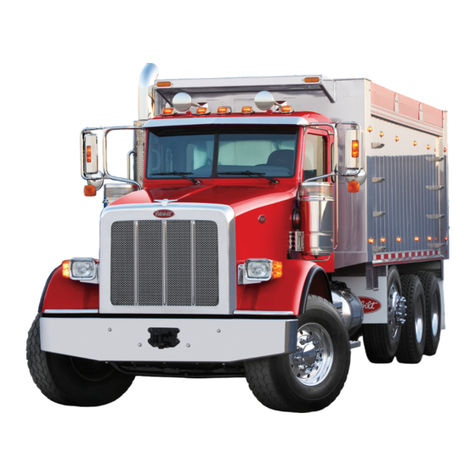
Peterbilt
Peterbilt 365 User manual
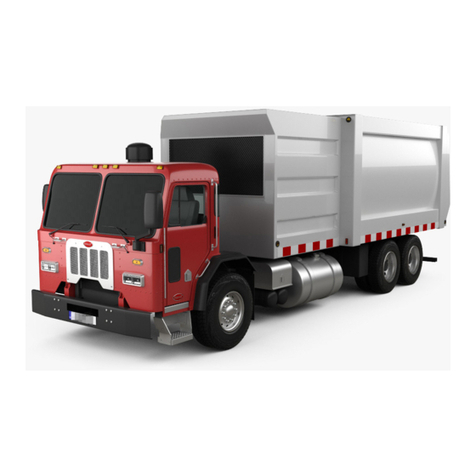
Peterbilt
Peterbilt 320 User manual
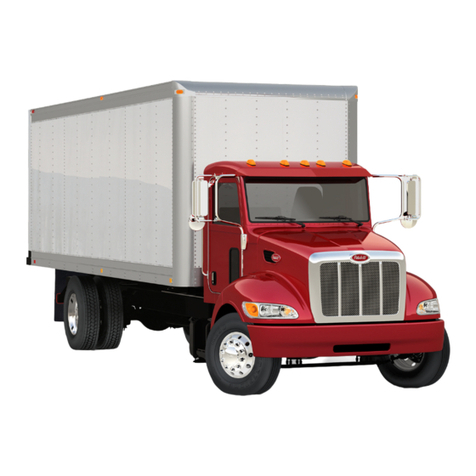
Peterbilt
Peterbilt 330 User manual
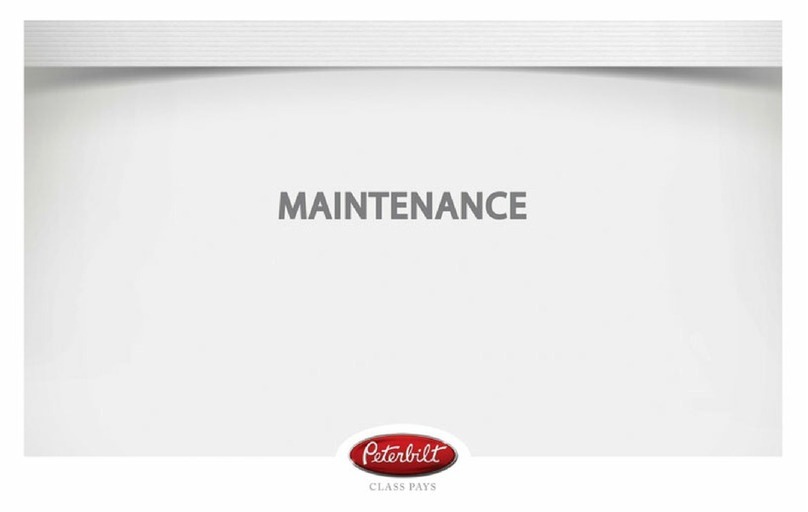
Peterbilt
Peterbilt 389 2017 User manual
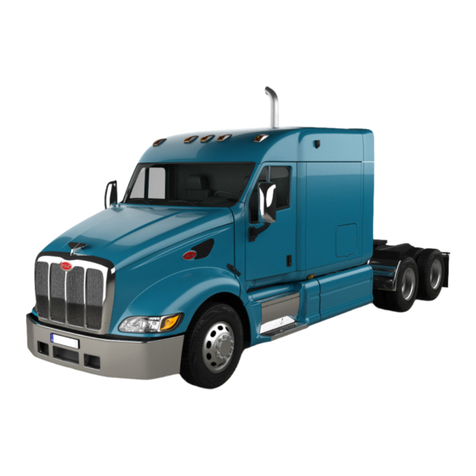
Peterbilt
Peterbilt 387 User manual
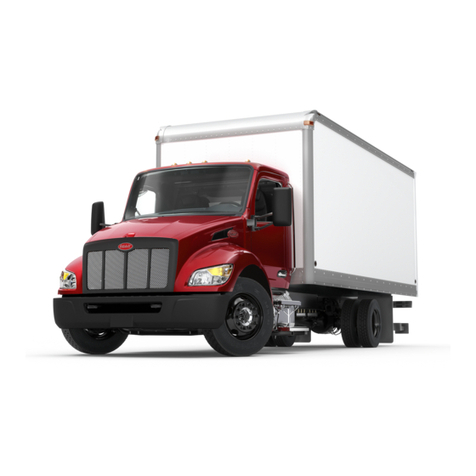
Peterbilt
Peterbilt 535 User manual
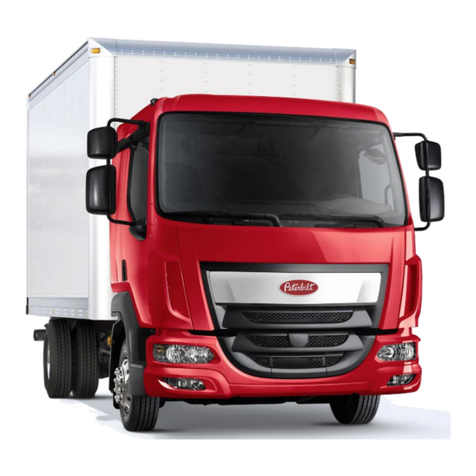
Peterbilt
Peterbilt 220 User manual
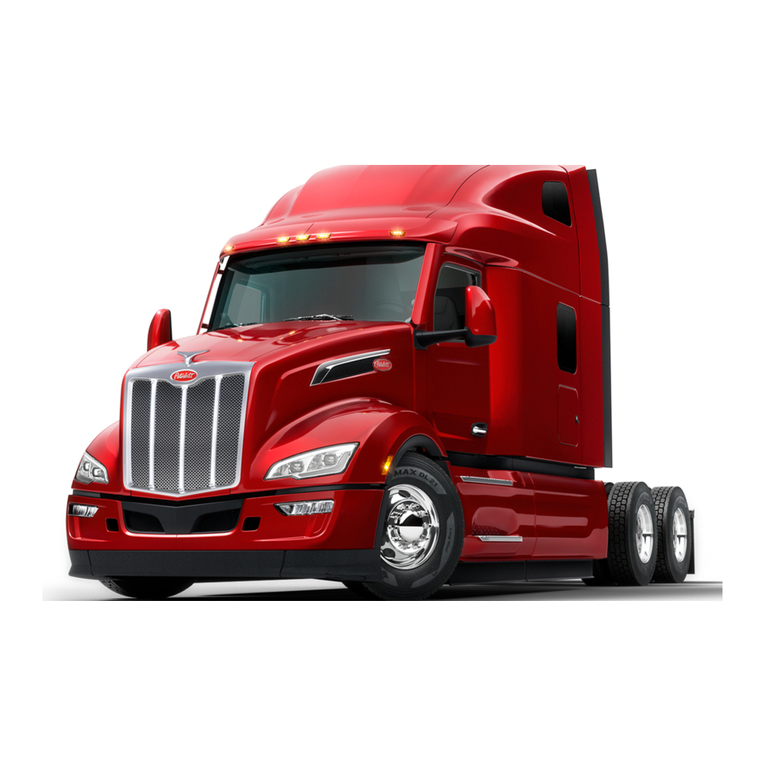
Peterbilt
Peterbilt 579 User manual

